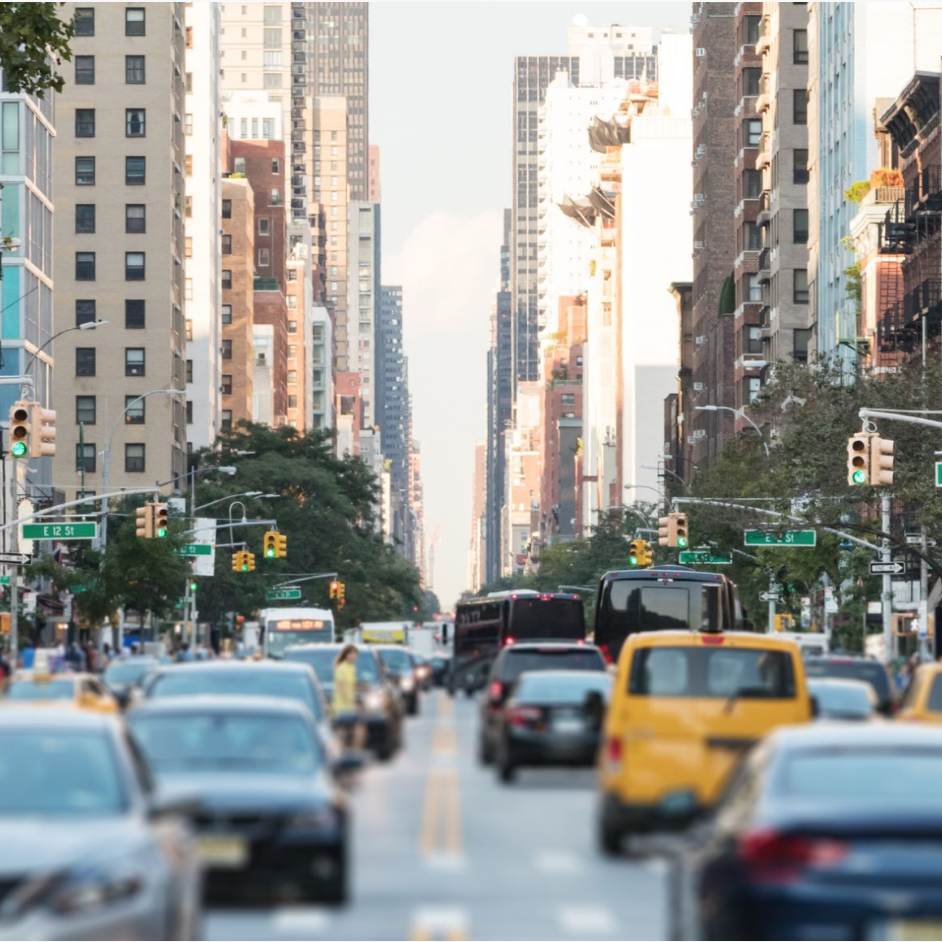There would be no historic districts without the New York City Landmarks Law — and the slew of notable architectural losses that prompted it.
Pennsylvania Station’s unceremonious destruction in 1963 was, for many denizens, the last straw in a string of controversial building teardowns. The station was designed by the legendary firm of McKim, Mead & White and completed in 1910 and bore an above-ground head house and train shed considered a Beaux-Arts masterpiece. Its exterior along 7th Avenue between 31st and 33rd Streets was buttressed by four foot wide Doric columns, recalling the Acropolis in Greece and St. Peter’s Basilica in Vatican City. An awe-inspiring waiting room, fashioned with Italian travertine, channeled the Roman Baths of Caracalla.
Whether you arrived in New York City for the first time or the thousandth, Pennsylvania Station served as an appropriately grand welcome. Needless to say, today’s labyrinth under Madison Square Garden — while retaining some original elements — is a far cry from its predecessor.
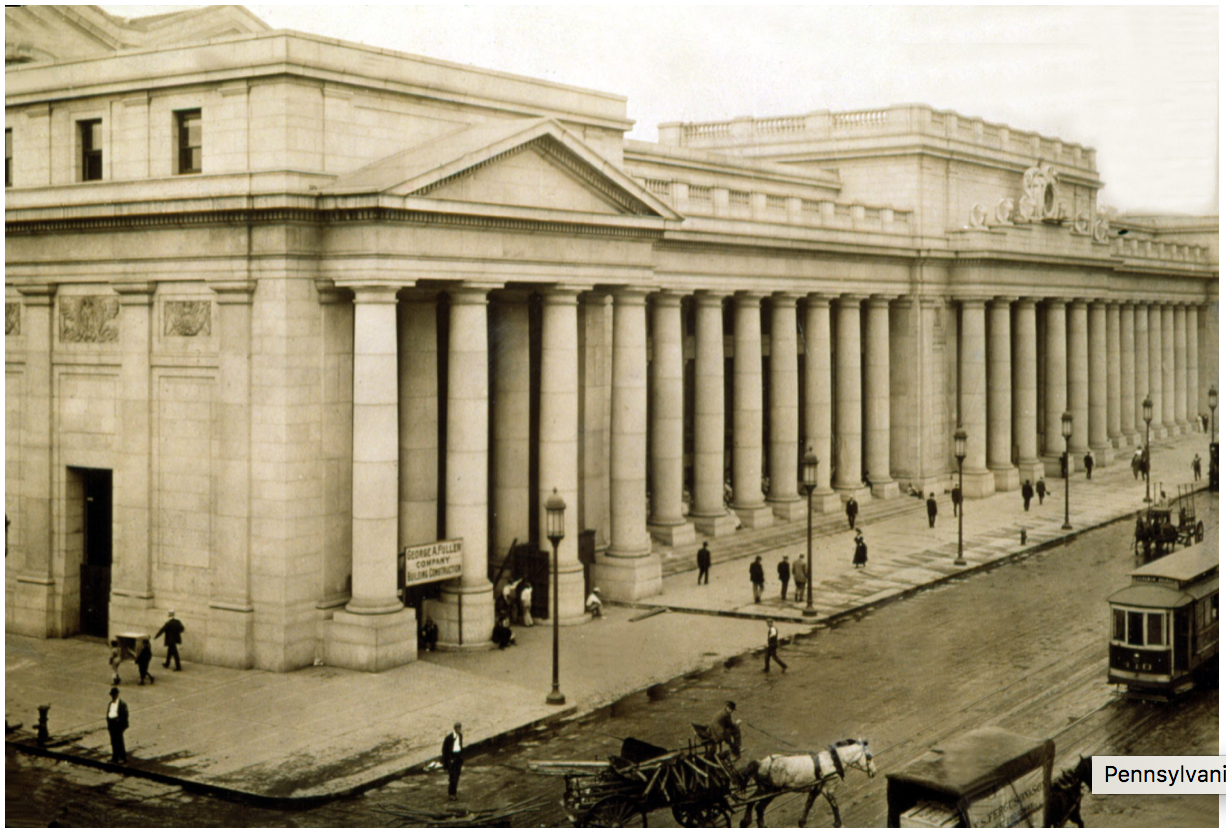
Rail ridership began to decline with the advent of interstates and commercial jets — a trend the station’s owners, the Pennsylvania Railroad, foolishly thought would be permanent. Countless notable New Yorkers rallied to save the transportation temple, including Eleanor Roosevelt, Norman Mailer, and urbanist firebrand Jane Jacobs. Nevertheless, the air rights changed hands in the 1950s, and the great Pennsylvania Station was no more by 1963.
People were so outspoken on its demise (as well as the subsequent leveling of the Brokaw Mansion on the Upper East Side) that the city needed to act. The Landmarks Preservation Commission actually came into existence in 1962 but held little influence and was thus helpless to stop the Penn and Brokaw destructions. Likewise, the Bard Act was passed at the state level in 1956, giving all cities in New York the power to enact preservation laws, but New York City’s government hadn’t yet applied it.
Finally, in April 1965, Mayor Robert F. Wagner Jr. signed the New York City Landmarks Law, drastically leveling up the LPC’s powers and solidifying its existence. Suddenly, the agency could establish protected landmarks and districts, safeguarding particular buildings or sites vital to the city’s architecture, culture, and history.
By that September, the commission chose Wyckoff House in Brooklyn as the city’s first landmark. Two months later, on November 23, the LPC designated its first district in Brooklyn Heights. The neighborhood, already a National Historic Landmark, was a logical first choice. It embodied everything that the LPC set out to preserve.
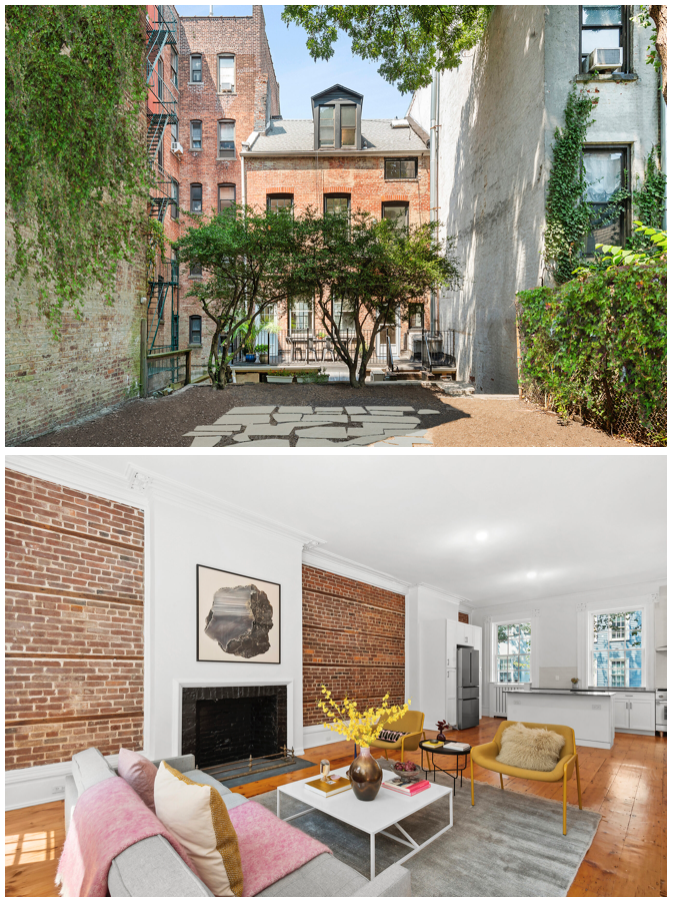
If you could boil Brooklyn Heights down into one word, it would simply be “character.” Its streets are lined with over a thousand buildings constructed before the 20th century, a large swath of which pre-date the Civil War.
Besides some changes near its edges, the area appears much as it did in the mid-1800s — when the advent of Robert Fulton’s steam ferry helped it become the first “suburb” of Manhattan. In those days, Brooklyn was its own city with a healthy, independent economy, fed largely by agriculture and industrial activity along its waterfront. The Long Island Rail Road began its route east on the Brooklyn Heights waterfront, running beneath Atlantic Avenue in what’s considered the world’s oldest subway tunnel. However, the neighborhood’s burghers ran it out by 1861, banning steam engines in one of the earlier documented spats of NIMBYism. Two decades later, Emily Roebling’s bridge to Manhattan was completed, helping set the stage for Brooklyn’s 1898 annexation — creating the first “outer borough” and the New York City we know today.
Naming Brooklyn Heights as a historic district in its entirety preserved the neighborhood’s storybook feel without sacrificing an ounce of desirability or fascination. After all, no sane person looks at a c. 1840s townhouse — three stories high with a brick-and-brownstone facade, a stoop, and ornamental detailing — and thinks, “I don’t know, I just wish it was a glass skyscraper.”
After its period of prosperous growth, the enchantment of Brooklyn Heights began to stagnate around the Great Depression. Residents remained committed to the area’s singular appearance, though, successfully convincing the city to amend its planned route for the BQE. Had the highway not moved west near the river, it would have run down the center of Brooklyn Heights, plowing through countless homes and potentially unraveling the neighborhood entirely. But the homes remained intact, becoming an essential factor — along with its “near Manhattan but decidedly not in it” location — in enticing a new generation of New Yorkers during the mid-1950s.
Brooklyn Heights architecture varies from street to street and building to building. Yet, no matter the design style, all the structures form a cohesive whole. And with lineages that travel back over a hundred years, there are plenty of stories to uncover.
Something On Every Corner
While dubious record-keeping makes its exact construction date unknown, the corner lot at 24 Middagh Street is c. 1820s-ish and considered Brooklyn Heights’ oldest home. Unmistakable in its wood-frame Federal-style design, the house is complete with quarter-round attic windows, a barn-like gambrel roof, and a front door ornamented with Ionic colonettes.
Three minutes around the corner at 70 Willow Street is a Greek Revival home commonly thought of as the “Truman Capote House” despite the fact it was never actually the author’s property. Capote did reside there for a period while working on Breakfast at Tiffany’s and In Cold Blood, but was merely the basement apartment tenant of the actual owner: Oliver Smith, a 10-time Tony-winning set designer whose work includes West Side Story, My Fair Lady, and countless others you’ve also certainly heard of. Smith was a fixture on Willow from the 1950s until he died in 1994, while the house was a distinctive buttery shade of yellow until its brick was stripped to the original color by recent owners — a move approved by the LPC.
Capote wasn’t the only literary icon to draw inspiration from the area’s tree-lined streets. In his poem “Crossing Brooklyn Ferry” (1856), Walt Whitman wrote “I too lived — Brooklyn, of ample hills, was mine.” Thomas Wolfe and W.H. Auden lived on Montague Terrace, Henry Miller on Remsen Street, and H.P. Lovecraft near the neighborhood’s southern border on Clinton Street. Meanwhile, homes at 9 Cranberry and 19 Cranberry starred as Faye Dunaway’s apartment in Three Days of the Condor and Cher’s house in Moonstruck, respectively. Clearly, the camera can’t help but adore 19th-century aesthetics.
Decidedly not a 19th-century townhouse, the c. 1889 Herman Behr Mansion is nonetheless integral to the architectural personality of Brooklyn Heights. Assembled from a combination of salmon-colored bricks, terra cotta, and sandstone, the mansion is considered a New York City hallmark of the Romanesque Revival form — something undoubtedly boosted by the decorative lions, dragons, and lizards adorning the exterior. Its design was the product of Frank Freeman, an architect who would perhaps be better known if not for several of his best works being razed — including the neoclassical Brooklyn Savings Bank in Brooklyn Heights, knocked down a year before the historic district designation.
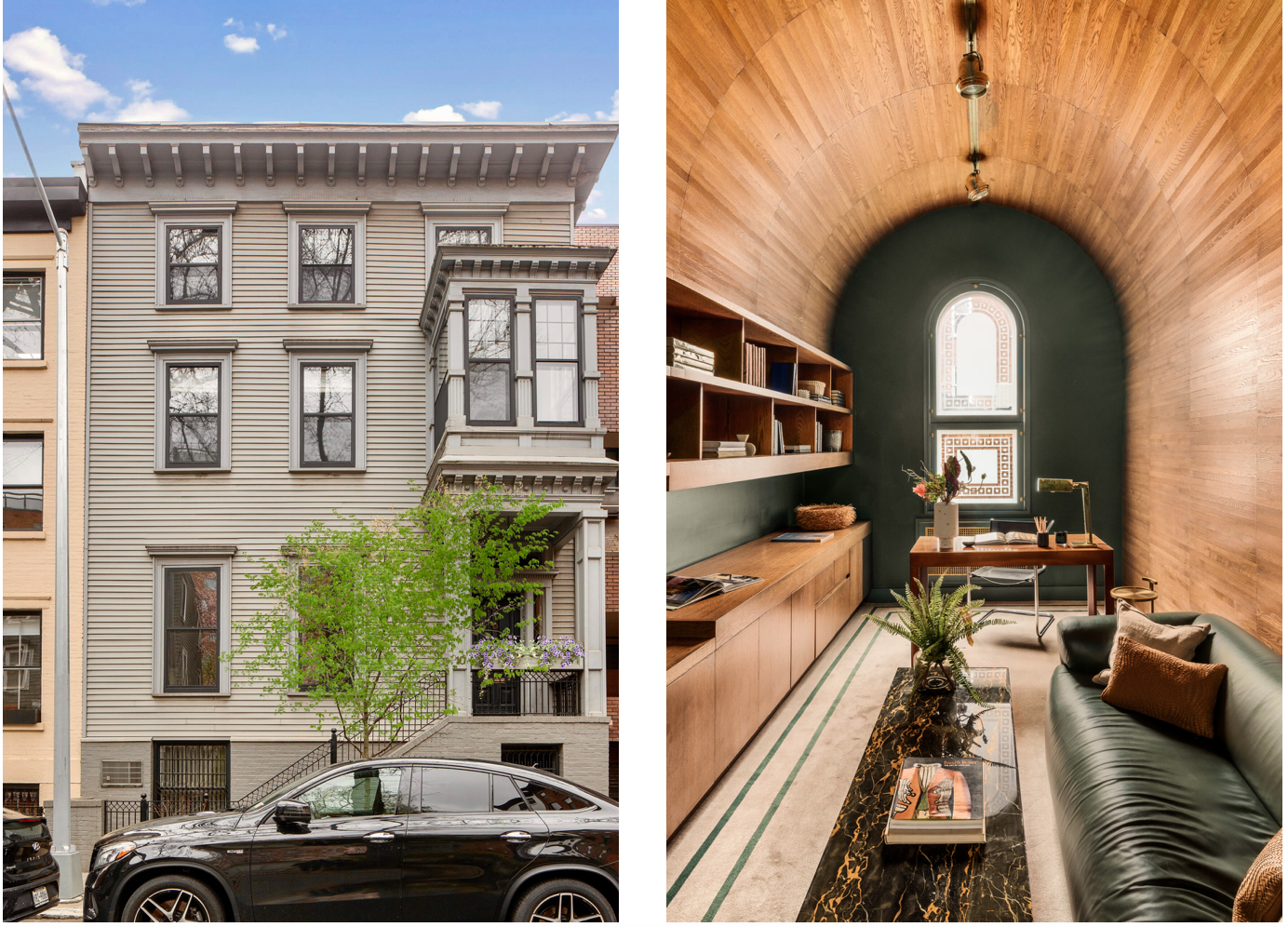
Sweetness prevails at 10 Pineapple Street, a modernized home with everlasting allure represented by The Talbott Team of Corcoran’s Park Slope Union Office. It’s hard to resist the charms of the arched, wood-paneled library, the sun-saturated breakfast nook, or the prewar craftsmanship seen in ceiling, doorway, and fireplace mantel moldings.
Real Churches, Fake Townhouses
Outside of residences, churches are the other exceptional structures that help define this famed neighborhood. The building on Clinton that houses St. Ann & the Holy Trinity Church dates to 1847. Its stained-glass windows crafted by brothers William Jay and John Bolton represent the earliest complete set of figural stained-glass made in the United States. St. Ann’s Church previously operated out of a c. 1878 High Victorian Gothic James Renwick Jr. design on the corner of Clinton and Livingston. However, the congregation sold the structure to the Packer Collegiate Institute in 1969, before moving to the then-vacant Holy Trinity building and assuming its current name.
Plymouth Church on Orange Street was built around the same time as Holy Trinity but endured a far more storied past. Despite being established less than 15 years before the Civil War, the church made an indelible mark as a station on the Underground Railroad, holding true to the beliefs of its original pastor, famed abolitionist Henry Ward Beecher. A plaque commemorates the seat in which Abraham Lincoln attended an 1860 service, months before his election as president. Clara Barton, Charles Dickens, and (much later) Martin Luther King Jr. all spoke there. A conception of Joseph C. Wells — later a co-founder of the American Institute of Architects — Plymouth incorporates Italianate and Colonial themes into an almost auditorium-inspired design that many churches have since replicated.
One final bit of Brooklyn Heights history sits with blacked-out windows at 58 Joralemon Street. The New York City Transit Authority (and its predecessors) have owned the building since 1907. Unlike the other homes throughout the area, this Greek Revival townhouse isn’t a townhouse at all. Rather, it is a fully-operational subway vent and emergency exit for the Joralemon Tunnel, which carries the 4 and 5 subway lines from Bowling Green, under the East River, and into Brooklyn’s Borough Hall station. If needed, this brownstone has more than enough power to supply air to or remove smoke and heat from the tracks nine stories below. Not exactly the neighbor one would expect to have — but hey, that’s Brooklyn.

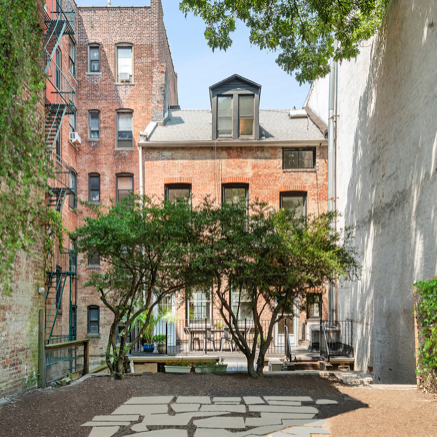
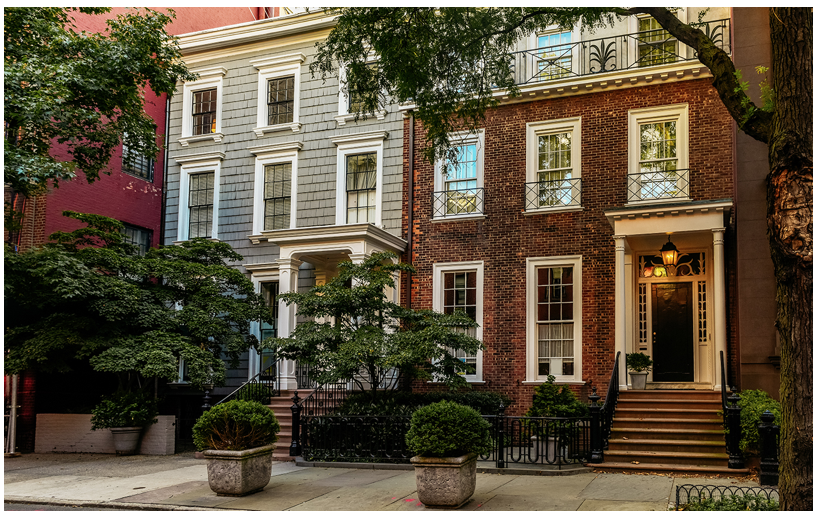
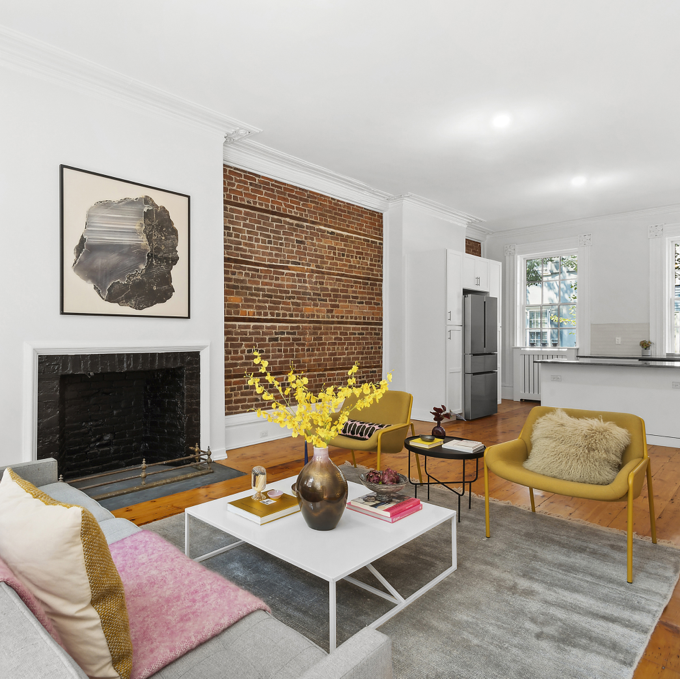
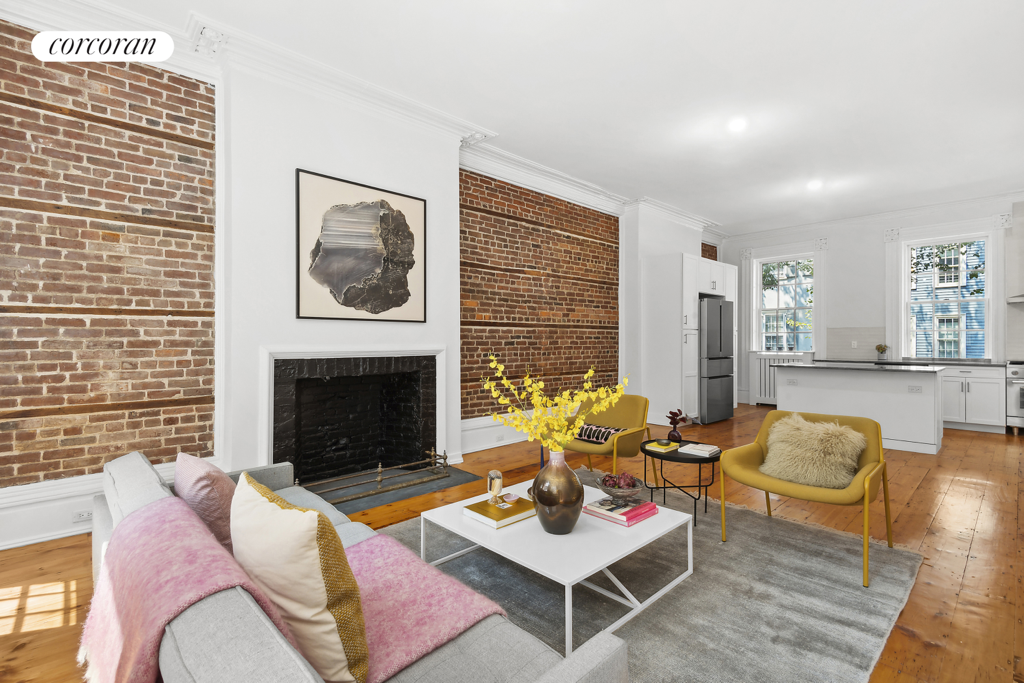

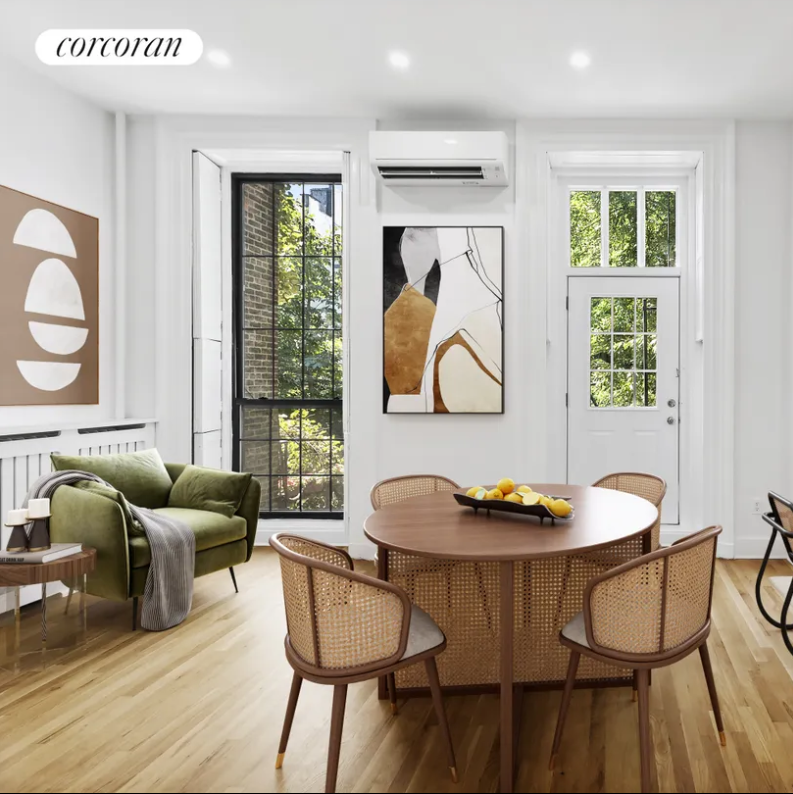
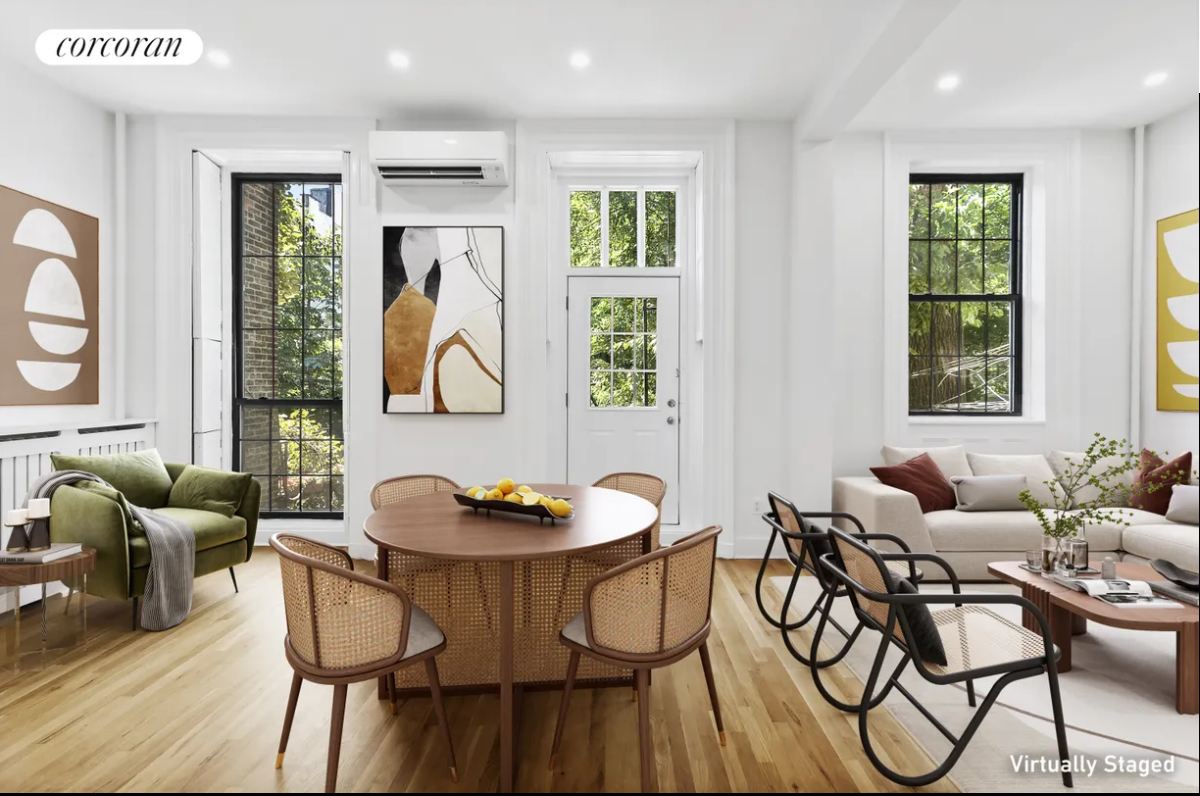 Exquisite full Parlor Floor with Huge south facinhg private backyard!
Exquisite full Parlor Floor with Huge south facinhg private backyard!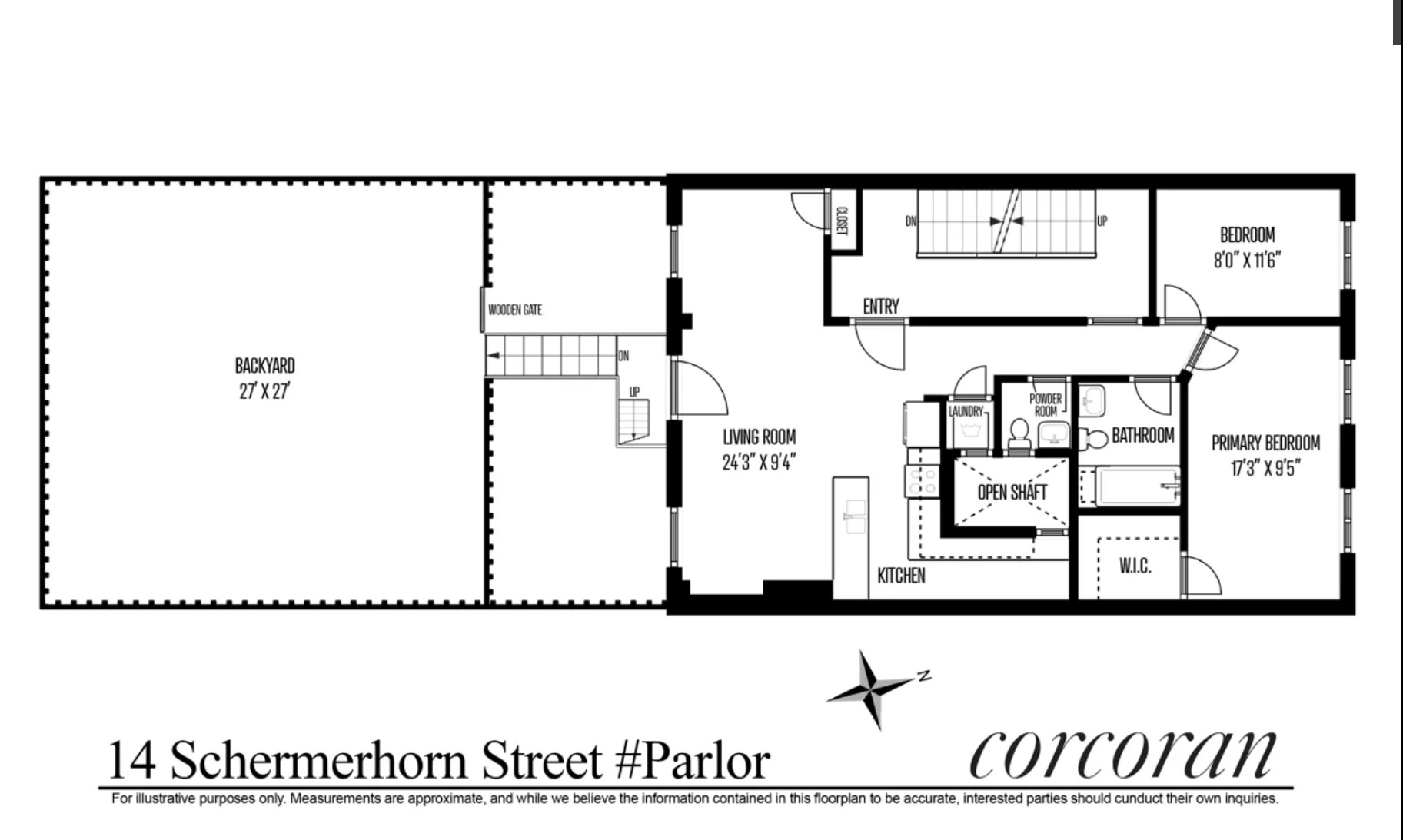
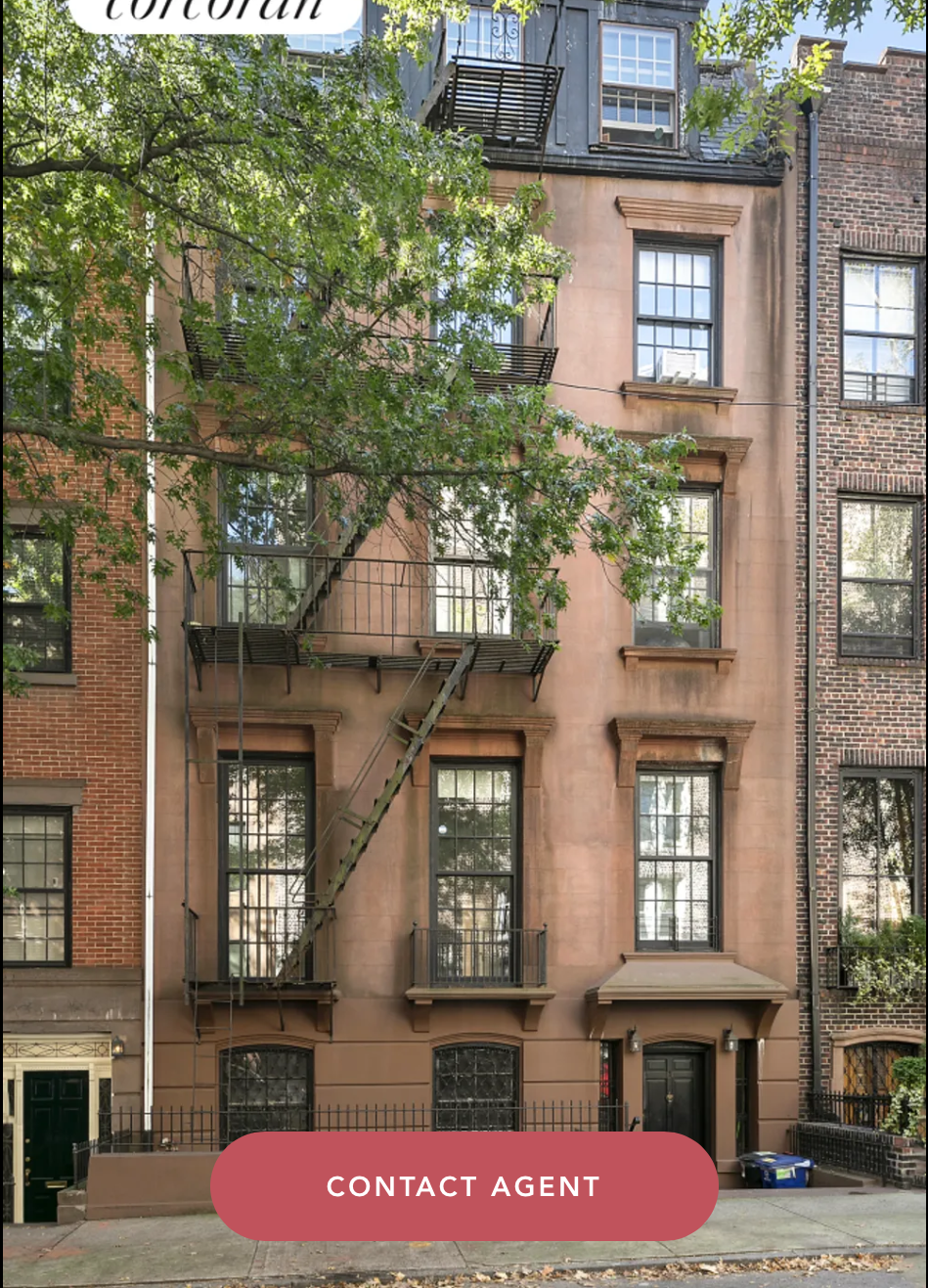








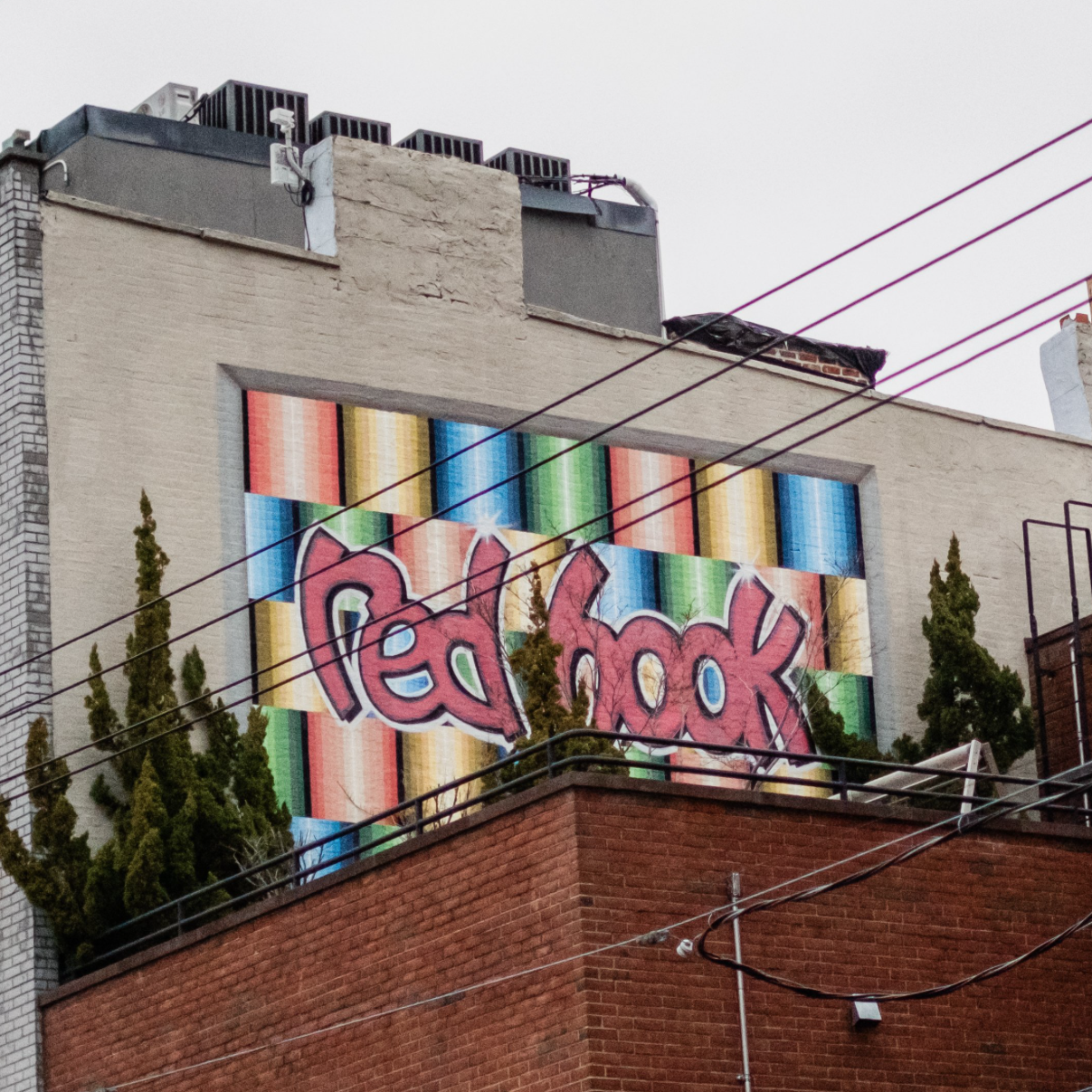

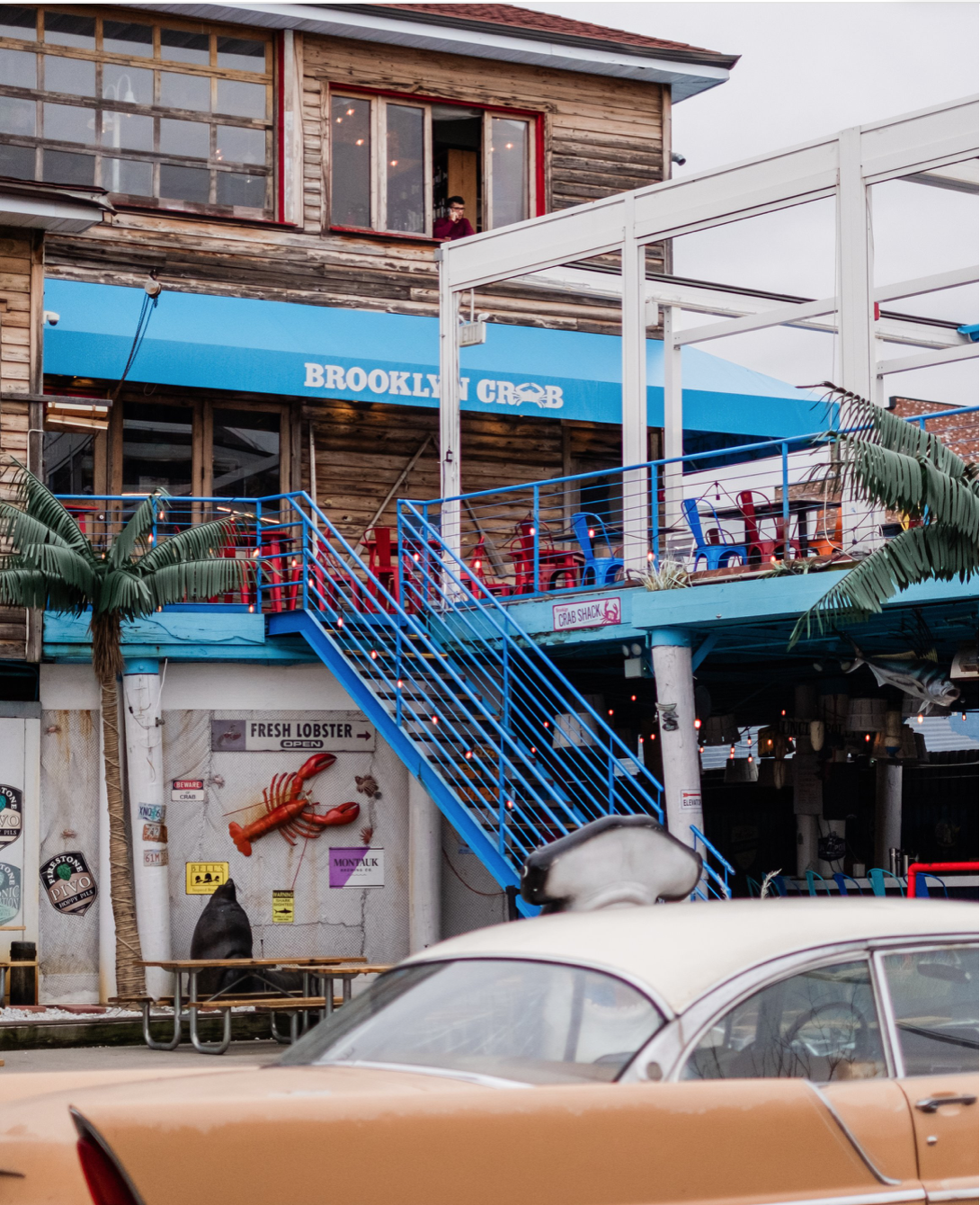



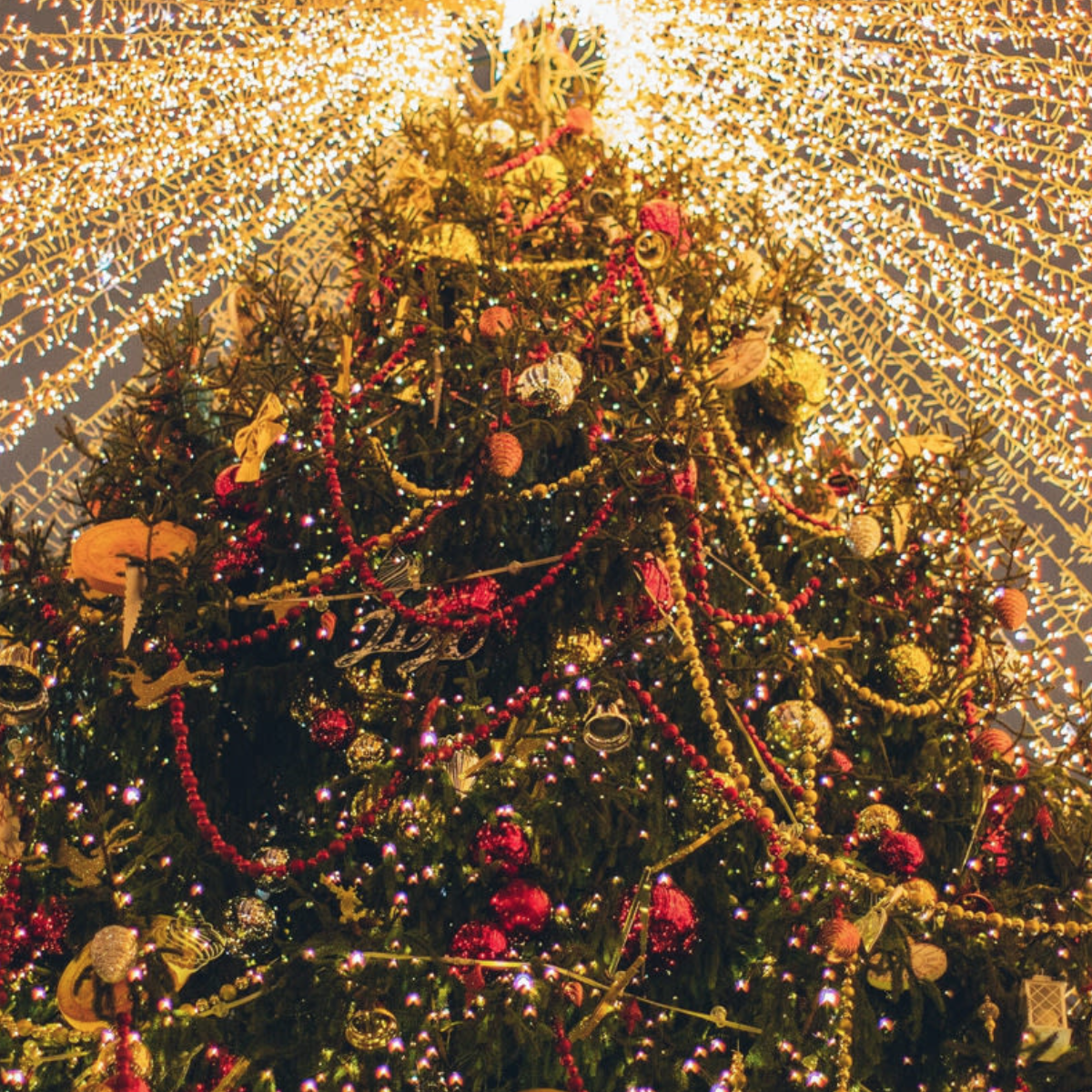
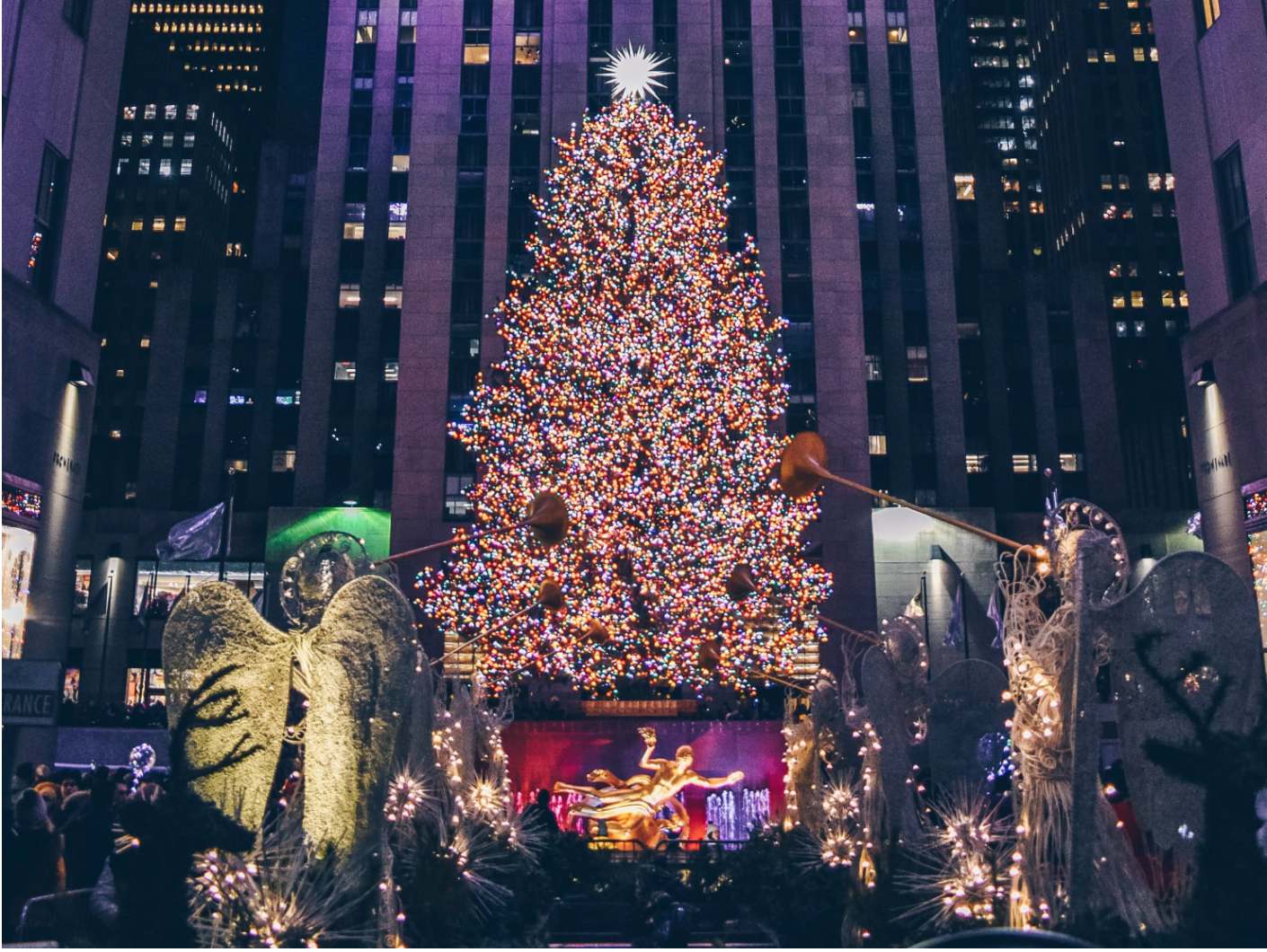



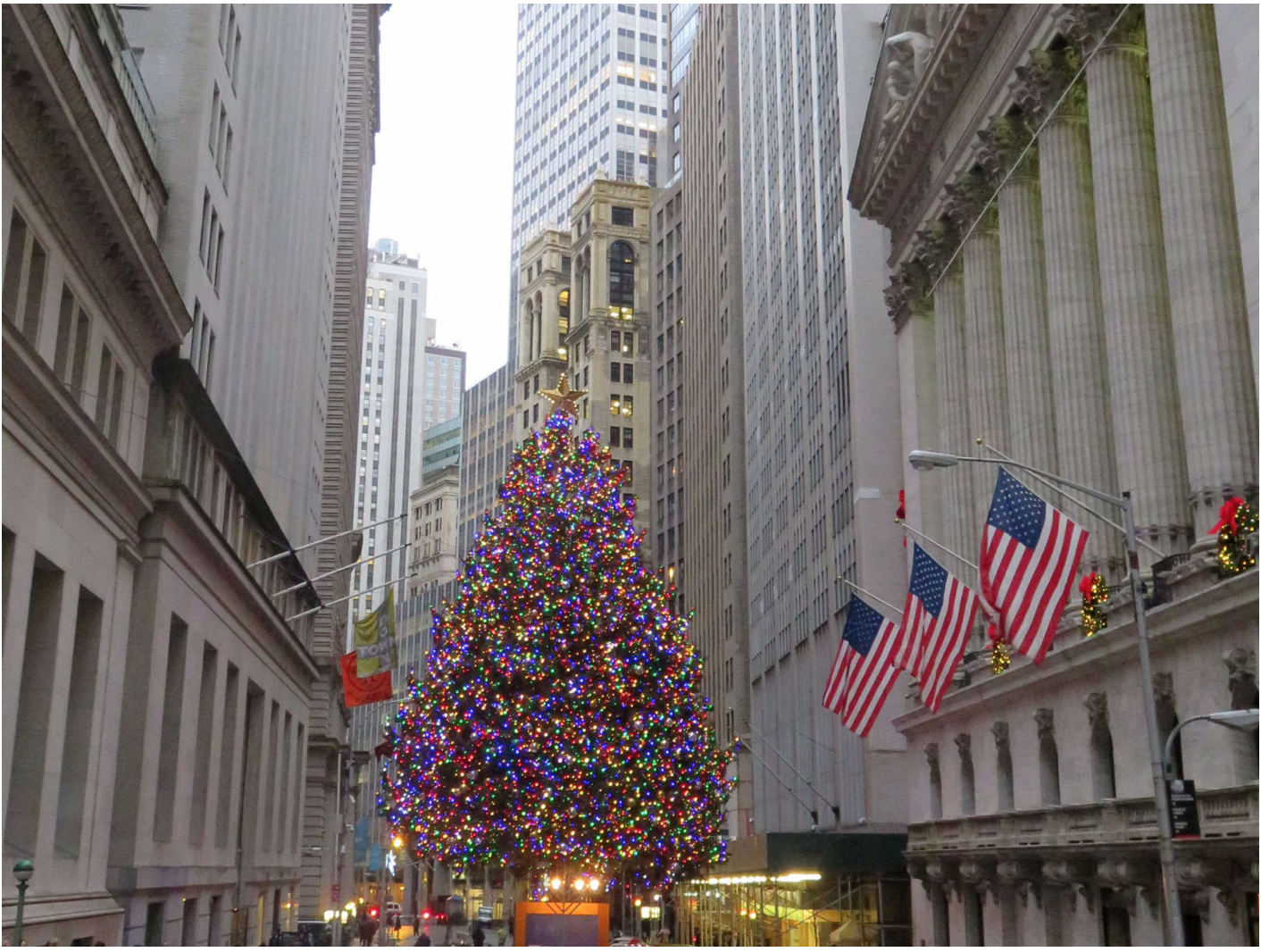


 This great opportunity was snatched up in 10 Days. If you been thinking about listing, let me help you through the process.
This great opportunity was snatched up in 10 Days. If you been thinking about listing, let me help you through the process.